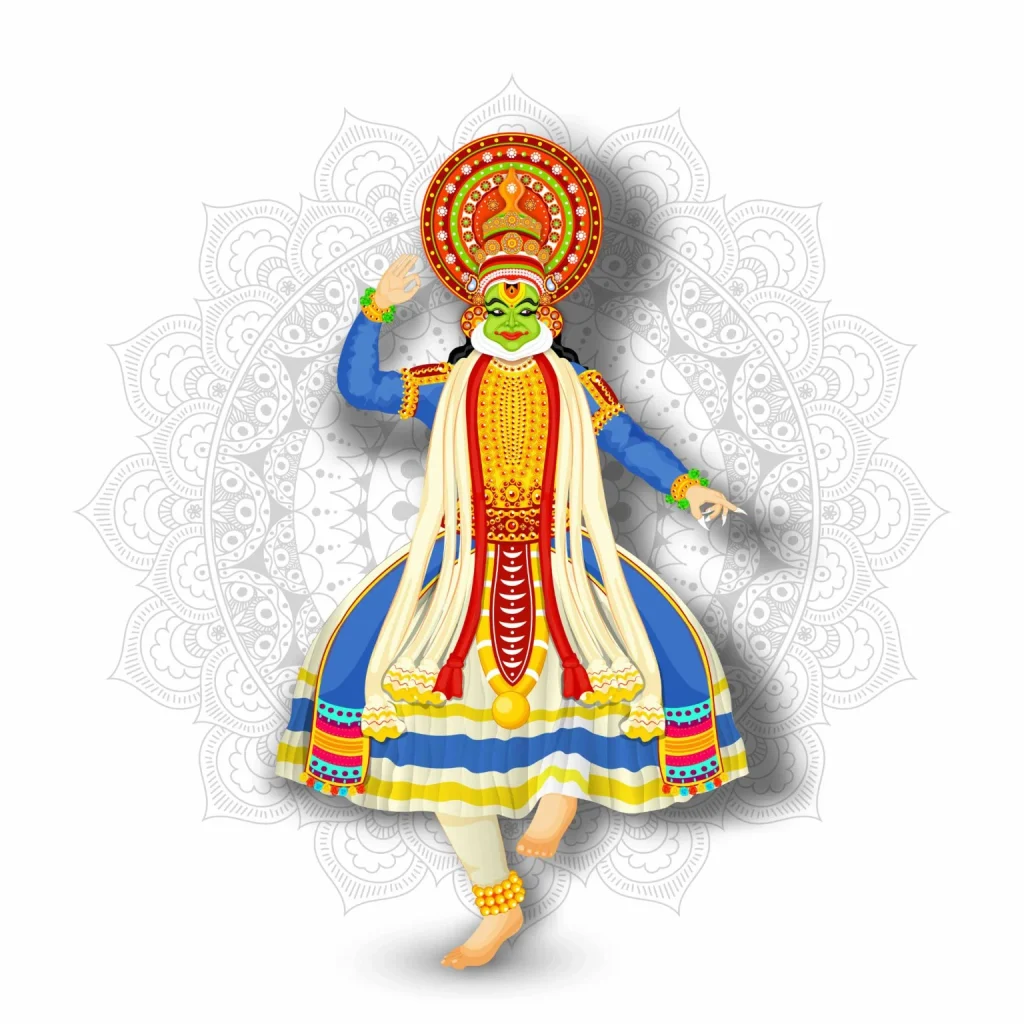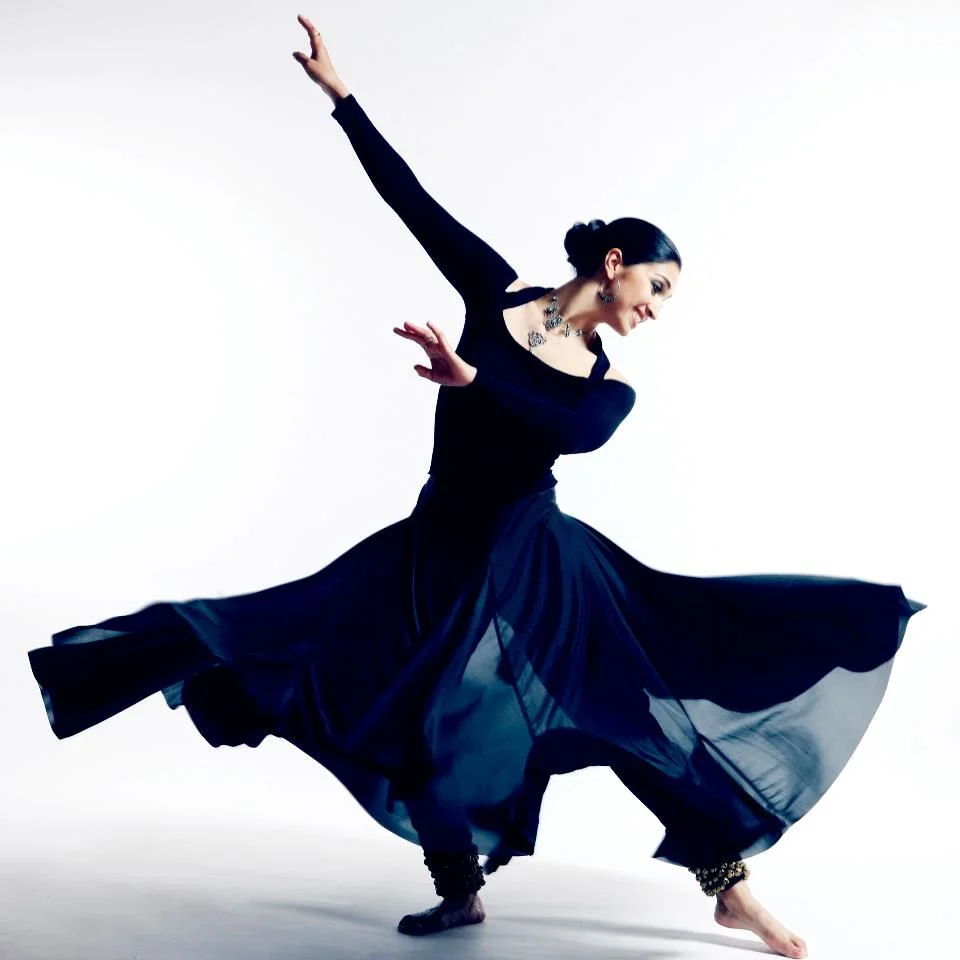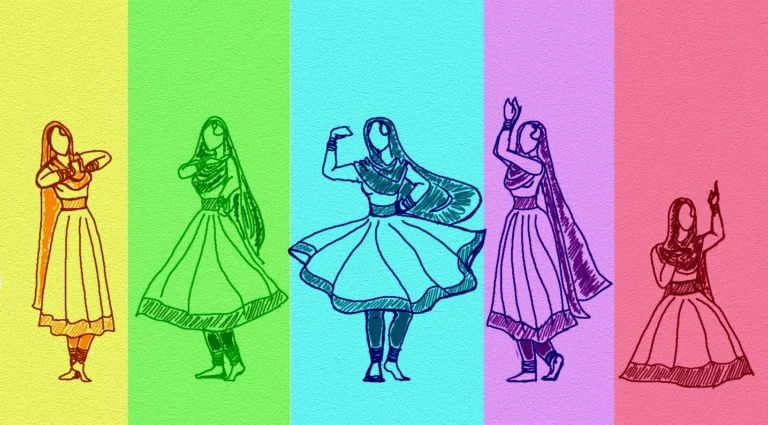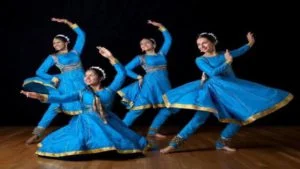Both Kathak and the Kathakali dance forms are quite conventional and one of the most significant classical dance forms of India. These dance forms are vibrant and distinct dance forms having special features which differentiate one dance form from the other. The distinctive features which were present in the dance forms have made it popular across the globe. While Kathak originated in the northern parts of India, Kathakali originated from the Southern parts of the country. These dance forms have strengthened the culture and heritage of India. Also, these dance forms are associated with Navrasa.
Introduction to Kathak Dance form
Kathak dance is one of the eight most popular classical dance forms which are prevalent in India. The word Kathak is derived from the Sanskrit word ‘kathak’ which means story. The individual who narrates a story is known as Katthaka and hence the dance form involving body movements is known as kathak.
Introduction to Kathakali Dance Form
Kathakali dance is one of the popular classical dance forms in India. It is the dance form of south-western India, which is from Kerala. It is one of the most vibrant dance forms as the dancer wears colourful and vibrant costumes, masks, and so on while performing this dance form. Kathakali is mainly the depiction of a story by the dancer through his performance. It is mainly believed to have been derived from the temples and folk arts of south India.

Difference in History of Kathak and Kathakali Dance form
Kathak Dance History
.This dance form also is traced back to the history of its origin from Hindu Sanskrit texts of the ‘Nritya Shastras’ whereby this text is written by Bharata Muni and who was an exquisite theatrical and musical person and originated between the 200BCE to 200BC. The spread of the dance form happened due to the “Kathakars” or the storytellers. The Kathakars were mainly the composers or poets who travelled from the northern part of India and the word has been derived from the Sanskrit word “Katha” which means story and “Kar” which means teller. These wanderers depicted the great epics through the poems, the songs, or the music.
Kathakali Dance History
The dance form has its origin in Natya Sashtras and evolved around the 17th century. Natya Shastras is one of the oldest Sanskrit texts written by Bharata Muni. The compilation of the Natya Shastras is dated back to 200BCE to 200CE. Although the emergence of the Kathakali dance is not clear yet it is believed to have been performed in coastal Kerala between 16th and 17th centuries. The literal meaning of the word Kathakali includes ‘Katha’ which means a traditional tale and ‘Kali’ means art. Krishna Attam was considered to be a dance that was the precursor of Kathakali.
Difference in Postures and Roles of Kathak and Kathakali Dance
Basic Postures in Kathak
The basic posture of Kathak is also known as the Angas. It involves an important part in giving the dance an aesthetic appeal and attractiveness. Practicing body movements with mainly keeping your body erect is its main characteristic. The body in the kathak needs to be properly aligned so that it helps in the controlled execution of the dance moves. It is also done so that individuals do not hurt themselves while performing the dance moves. Firstly, the heels must be kept together while the feet should be kept apart from each other. The second part is the positioning of the knees which should always be in a straight line with the feet and the same goes for the hip area.
Five Main Roles in Kathakali Dance Form
This popular dance form can be divided into five main roles of Kathakali which is also known as the Veshams of Kathakali. These five roles are as follows:
- PACHA (GREEN)- This is used to depict the characters of kinds or divine beings. Mainly used to denote noble roles in the dance form Kathakali.
- KATHI (KNIFE)- This is used to depict characters who are evil and have the characteristics of rudeness, arrogance, and so on.
- KARI (BLACK)- This is also used to depict the evil characters.
- THAADI (BEARD) – Includes the Vella Thaadi also represents the white beard and is used to depict characters that are not evil. Used to depict the characters of Ram from Ramayana. On the other hand, the Chuvanna Thadi is used to depict characters who are evil in Hindu mythologies.
- MINUKKU (RADIANT)- This is used in the dance form of Kathakali to depict spiritual characters.
Other Differences in Kathak and Kathakali Dance
Mudras in Kathak
The hand gestures involve the two kinds of mudras which are the Asamayukta which is performed with one hand and also the Samyukta hastas which involve the mudras which are performed with both hands. There are numerous mudras in Kathak combining both the Samyukta and the Asamyukta mudras. Some of the common mudras in Kathak are the Pataka, the Mudraakhaym, the Mushi, the Kartari Mukha and so on. These mudras are almost above 60 in number and need special attention and continuous learning.
Footwork in Kathak
Performing various foot movements in the dance form of Kathak is extremely essential and forms the base of this dance form. The footwork is taught by the teacher from slow ‘laya’ and it eventually increases to double, triple, and also four times in which Kathak is performed. The footwork is also known as Taatkar in Kathak.
Expressions in Kathak
The learning of the expressions and adequately expressing them makes a dance form exquisite and beautiful. This involves the Mukhaj Abhinaya as Kathak is a dance form that represents the mythological stories through the dance in the form of a drama. This dance form involves facial expressions which may depict anger, sadness, and happiness.
Ishtapada in Kathak
This is the practice of celebrating the glory and greatness of God through the dance form. This dance form having its origin from Natya shastras has various ways of providing ode and prayers to the Almighty through its beautiful movements and footwork. This dance form developed during the Bhakti period and has been celebrating the greatness of Lord Krishna and Radha.
Kathakali Costumes
This dance form has a variety of costumes that are worn by the role he or she is about to perform. This includes the headgears which are worn by men, the makeup, and masks which are also different from each other. Men generally wear full-sleeved jackets which are dark in colour. Bulged-out skirts are also worn by the Kathakali dancers. The lower part of the dancer’s dress that is the skirt is the same for all except the Minukku dancer. Female dancers of Kathakali wear white sarees, make their hair into a top knot near the forehead, ornamented scarf, and red jackets. Ornaments include bracelets, necklaces, bangles, ankle bells, and so on.
The costume is a very important part of this dance form and can help in differentiating between different characters. The costume is vibrant and is much different from other dance forms.
Conclusion
This article on Kathak vs Kathakali shows how both the dance form differs from each other right from their origin to the basic characteristics. Thus, the answer to the frequent query- Is Kathak and Kathakali the same? is No, Kathak and Kathakali dance forms differ a lot from each other.
Share with your friends






